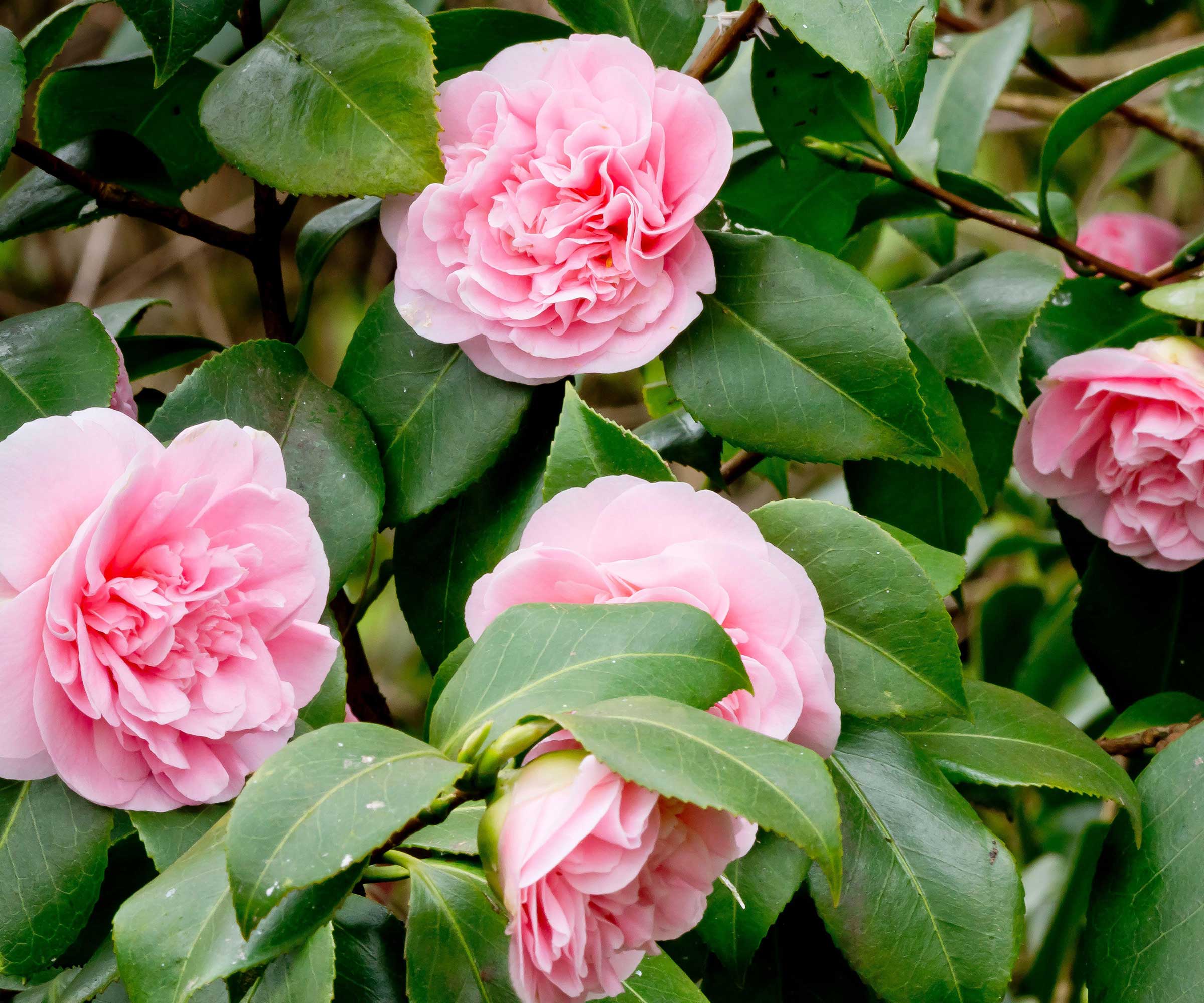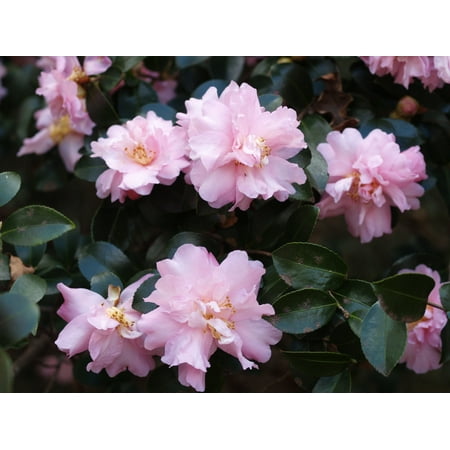How to grow camellias in pots – hardy, evergreen shrubs for your outside space
By following our expert-approved guide, your pot-grown camellias will flourish


Learning how to grow camellias in pots is a surefire way to add color, structure and evergreen interest to your container displays. Whether you have a small yard or a large plot, growing camellias in pots will transform any space with their glossy green foliage and large romantic blooms.
When considering how to grow these popular shrubs, many species are relatively cold hardy, with some even tolerating winter temperatures down to 15°C/5°F. In northern, cooler regions, where winters can be long and cold, the evergreen camellia can help to maintain interest when all else is dormant.
So, whether you are a big camellia fan, or you’re looking to plant your first, our expert guide has all the information you need to grow these spectacular shrubs in pots, including the best types of camellias for your displays.

How to grow camellias in pots
Often considered some of the prettiest evergreen plants, camellia shrubs are ideal for container displays. While it will depend on the species, most will happily grow from US hardiness zone 8 plus, although Camellia japonica shrubs can be grown down to US hardiness zone 6, making them a perfect plant for gardeners in cooler regions.
Growing advice for camellias in pots

'When considering how to grow camellias, always remember that these shrubs do best in part sun or shade,' says Bert Bast, garden expert and owner of Bast Brothers Garden Center. 'Avoid positioning your pot in a full-sun position, as camellias can struggle during the summer months.'
In the ground, camellias can grow up to 30 feet tall and wide, but fear not if you have a smaller yard, their growth will be limited when planted in pots. 'Camellias do not grow all that fast so I would caution against choosing a large pot,' Bert adds. 'Instead, select a container only slightly larger than the rootball, but with enough room to add some fresh potting soil.' Choose a potting mix that is recommended for container plants, such as this Miracle-Gro mix from Amazon.
In terms of watering, camellias prefer relatively moist soil. This can be a challenge when growing camellias in pots and can mean frequent deep waterings during the spring and summer months, giving your container at least one can of water once or twice per week. 'Anytime you have a plant in a pot you should keep monitoring the soil to double-check the rain is enough,' Bert adds. 'If it is dry to the touch, you need to carry out some watering yourself, and quickly.'
Design expertise in your inbox – from inspiring decorating ideas and beautiful celebrity homes to practical gardening advice and shopping round-ups.
When fertilizing camellias, know that these 'low-maintenance shrubs will benefit from an acidic organic feed in the spring and fall,' Bert advises. Try this organic fertilizer formulated for camellias, available from Amazon.
Finally, it is best to prune camellias shortly after they are finished blooming, usually in the early springtime. While pruning will not be as important for container-grown camellias, regular trimming will keep your shrubs shapely, compact and in good health.

Bert Bast is a garden expert and owner of Bast Brothers Garden Centre. Established in 2014 and nestled in the heart of Mullica Hill, NJ, Bast Brothers Garden Center is a destination for all things garden.
Recommended camellia varieties for pots

There are two distinct groups of camellias to choose between. While both have evergreen foliage and striking blooms, they flower at slightly different times which might impact your container gardening ideas.
Camellia sasanqua, seen in the image above, blooms from late November to December, while the more common Camellia japonica, has an exceptionally long flowering period from October until spring. Both can be grown in pots, and their height and width will be limited due to the restrictions of the container.
There are several dwarf cultivars, however, that are perfectly suited to smaller yards. For example, Camellia sasanqua 'October Magic' is one such option. With large, pink peony-like blooms, this variety will grow no taller than three to five feet and is ideal for growing on a terrace. Dwarf camellia starter plants are available from Amazon.
'I prefer to stick with the brighter and more eye-catching colors as they bloom in the cold seasons,' says Bert. 'This can help put a smile on the face of those of us who do not appreciate the cold and remind us that spring is not far away. An argument could also be made for the darker red colors that have a chance to bloom during the Christmas season... especially if you are looking for a festive twist.'
FAQs
Why isn't my potted camellia flowering?
There are many reasons why camellia might not be flowering. Common camellia problems include lack of water or sun damage, which can both reduce blooming. Bud drop can also occur following dramatic temperature fluctuations, for example, an early cold snap during fall as the buds are preparing to open. I would also recommend having a careful dig in the surface of the soil. Vine weevils are attracted to camellias, and these grubs can often be found feeding on the roots.
It is best to repot your camellia shrubs every two to three years, refreshing the soil and giving them more room to grow. This is best done in the spring after the flowers have faded but before the heat of summer. You might need to ask a gardening friend or neighbor to assist with this job, as rootbound shrubs can be tricky to remove from an old pot.
If you are a patient gardener, consider also learning how to propagate camellias by taking cuttings. I recommend taking semi-ripe cuttings (from the current year's growth) around mid to late summer. While it might take three years before your plants produce flowers, growing camellias from cuttings is a fun and free way to grow your collection.

Thomas is a Content Editor within the Gardens Team at Homes and Gardens. He has worked as a professional gardener for both public spaces and private estates, specializing in productive gardening, growing food and flowers. Trained in Horticulture at the Garden Museum, he has written on gardening and garden history for various publications, including The English Garden, Gardens Illustrated, Hortus, The London Gardener and Bloom. He has co-authored a Lonely Planet travel book, The Tree Atlas, due out in 2024.



